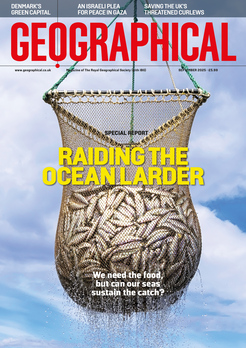
New study reveals how possum shrimp navigate their way home due to differences in ‘chemical seascape’ across ocean
By
Homing – the ability of an animal to navigate towards an original location – has been observed in a diverse range of species from salmon and racing pigeons to frogs, rats and sea turtles. But now, for the first time, researchers have discovered that cave-dwelling mysid shrimp (Hemimysis margalefi) – also known as possum shrimp – are able to detect their original ‘home’ caves via scent.
Possum shrimp live in sea caves in the northwestern Mediterranean, forming dense swarms of millions of individuals in each cave. Throughout their life, it is thought that individuals continue to return to their natal caves after feeding on algae, detritus and other zooplankton in the day – travelling hundreds of metres to find food – in order to shelter from predators.
To see if this was true, seawater samples was taken from three underwater caves in Calanques National Park off southern France, called ‘Fauconnière’, ‘Jarre’ and ‘3PP’ (a control water). Researchers then caught hundreds of adult possum shrimp from the Fauconnière and Jarre cave, as well as other individuals from another species that live in shallow waters.

They found that when possum shrimp were given the choice between two water flows, they strongly preferred water from their own cave. Individuals from the Jarre cave spent 16 times longer in Jarre water than with the control water, and individuals from the Fauconnière cave spent three times longer with water from their cave compared to the control water.
Differences in the chemical signature of Jarre and Fauconnière caves were found, with varying quantities of metabolites including natural peptides, fatty acid, steroids and alkaloids, as well as anthropogenic pollutants – pollutants caused by human related activities. It is these difference which are believed to cause the scent variety that shrimp can then pick up on to find their home.
‘Here we show for the first time that mysids can tell the water-borne odour bouquet – its so-called chemical seascape – characteristic of their home cave apart from that of nearby caves,’ said Dr Thierry Pérez, CNRS research director at the marine research station of Endoume near Marseille in France.
‘This strongly suggests that these distinctive seascapes help them find their home cave again when they return from their nightly migrations.’




